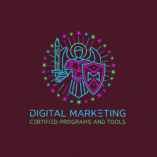Creating a content strategy requires focus, consistency, and the right mix of blog content ideas. Especially for startups and small businesses, the right plan drives traffic, builds trust, and increases conversions. This guide will help you align your strategy with business goals while offering plenty of inspiration for new blog content ideas.

1. Understand Your Audience
First and foremost, understand who you’re creating content for. Without clarity, even the best blog content ideas can fall flat. Define clear personas. Secondly, map out the buyer’s journey. Thirdly, analyze pain points. Finally, adjust your tone and format accordingly.
Example: A SaaS brand might target “Efficient Erin,” a 35-year-old looking for tools to automate business operations.
To succeed long-term, include content marketing strategies tailored to each persona. Blend this with your seo content marketing strategy to ensure visibility. By addressing each stage—awareness, consideration, and decision—you nurture users through the content marketing funnel.

2. Set SMART Goals That Guide Blog Content Ideas
Every content marketing strategy must begin with clear, measurable goals. Therefore, define what success looks like. In addition, connect each blog idea to a specific goal. Also, avoid vanity metrics. Instead, focus on performance indicators.
For example:
- Raise organic traffic by 30% in 90 days.
- Increase newsletter signups by 20% through educational blog posts.
- Drive 1,000 product demo requests using blog CTAs.
When using long form content seo, link goals with performance metrics. Additionally, build a roadmap with your content marketing funnel. Consequently, your blog efforts become much more strategic.

3. Perform a Detailed Content Audit
Start by identifying what content already exists. Secondly, assess how it’s performing. Third, find what’s missing. Lastly, determine how blog content ideas can fill the gaps.
Use tools like Google Analytics or SEMrush. Also, check competitors. Furthermore, analyze trending topics. Finally, update old posts with new keywords and fresh insights.
Don’t forget to focus on long form content seo when refreshing old posts. That way, you improve visibility and value. Incorporate the latest content marketing strategies to keep your blog current and useful.

4. Pick Content Formats Based on Blog Content Ideas
A great blog strategy needs diversity. Firstly, identify the formats your audience engages with. Secondly, match each format to the sales funnel stage. Thirdly, test different styles. Lastly, measure what works best.
Formats can include:
- Educational how-to blogs
- Data-backed listicles
- Deep-dive case studies
- Expert interviews

Some blog content ideas can become videos or webinars. For instance, a popular blog can evolve into a visual guide. And with long form content seo tools, optimize these for rankings. So, each piece supports your broader seo content marketing strategy.

5. Integrate SEO into Blog Content Ideas
For discoverability, every blog must be SEO-ready. First, conduct keyword research. Second, align keywords with user intent. Third, use meta titles effectively. Lastly, interlink related posts.
Blog content ideas must include primary and secondary keywords. In addition, embed internal links. Also, ensure fast load times. Moreover, make your blog mobile-friendly.
To get noticed, blend what is long form content with high-value information. Tools like Ahrefs help target SEO phrases with less competition. The right seo content marketing strategy helps every blog perform better.

6. Build a Publishing Calendar Around Blog Content Ideas
A publishing calendar helps maintain consistency. Initially, define how often you’ll post. Next, allocate topics by campaign. Then, schedule reviews. Lastly, factor in events and promotions.
Use Trello or Notion to visualize the calendar. Also, categorize blog content ideas by funnel stage. For instance, publish awareness content early in the month. Then, shift to decision-stage posts by the end.
Furthermore, use the calendar to balance formats. Include posts optimized with long form content seo tools. Also, prioritize content ideas that fit within your content marketing strategies. Always plan ahead.

7. Evaluate & Optimize Every Blog Post
Lastly, review each post’s performance. Use Google Search Console and analytics. Also, ask for reader feedback. In addition, A/B test headlines and CTAs. Finally, refresh underperforming content regularly.
Reviewing metrics like bounce rate and conversion helps. Furthermore, use tools to track keyword rankings. Also, compare which blog content ideas perform best. Then, build on what works.
As part of your broader email strategy, consider repurposing blog content into newsletters. Additionally, integrate it into your content marketing funnel to push leads forward. Everything must serve a strategic purpose.

8. Generate Endless Blog Content Ideas
If you ever feel stuck, consider these sources. First, customer questions are gold. Second, forums like Reddit or Quora offer insight. Third, competitor content sparks ideas. Lastly, keyword tools can inspire.
For example, explore:
- “How to create content marketing strategy for B2B SaaS”
- “Top content marketing funnel mistakes and how to fix them”
- “What is long form content and why it matters in 2024”
Recycle older blogs by updating them. Also, expand FAQs into full-length articles. Additionally, use insights from sales teams. Finally, survey your audience for fresh ideas.
With this approach, your blog becomes an SEO engine. Each article, when crafted well, feeds your content marketing funnel. Moreover, you gain authority in your niche. That’s how blog content ideas fuel long-term growth.

Final Thoughts: Turn Blog Content Ideas into Business Results
To wrap up, don’t publish just to stay active. Instead, use blog content ideas that connect with your audience. Build each post with a clear goal. Keep sentences concise. Include transitions. Repeat key phrases naturally.
When using a consistent seo content marketing strategy, every blog post serves your bottom line. Combined with long form content seo tools and great planning, you’ll outperform your competition.
From defining goals to executing tactics, use blog content ideas as a growth framework. Always test, learn, and adapt. Your blog isn’t just content—it’s a powerful lead-generating asset when used strategically.









